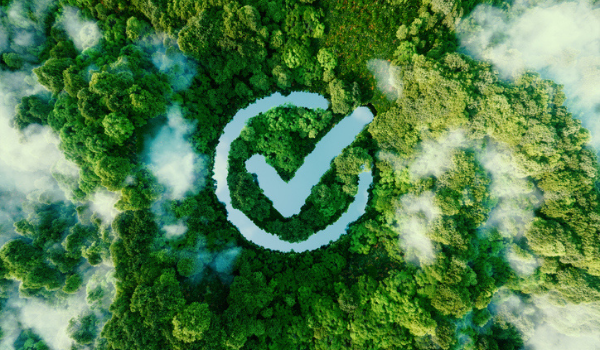
Sustainable Design Practices for Freelancers
As the world grapples with environmental challenges and strives for a more sustainable future, the design industry plays a pivotal role in shaping our ecological footprint. Freelance designers, in particular, have the opportunity to adopt and promote sustainable design practices. In this comprehensive guide, we will explore the concept of sustainable design, its importance, and practical strategies that freelance designers can implement to create a greener, more environmentally friendly future.
Understanding Sustainable Design
Before delving into sustainable design practices, it's essential to grasp the concept itself:
Sustainable design, often referred to as eco-design or green design, is an approach that seeks to minimize the negative environmental impact of products, services, and processes while maximizing their benefits. It involves considering the entire lifecycle of a design, from raw materials and production to use and disposal. Sustainable design aims to reduce resource consumption, minimize waste, and support the well-being of people and the planet.
The Importance of Sustainable Design
Sustainable design is not merely a trend; it's a necessity for several compelling reasons:
Environmental Impact
The traditional design and manufacturing processes are resource-intensive and often result in pollution and waste. Sustainable design aims to reduce greenhouse gas emissions, water usage, and energy consumption, ultimately mitigating climate change and preserving natural resources.
Health and Well-being
Sustainable design prioritizes the health and well-being of users. It promotes the use of non-toxic materials, improved indoor air quality, and designs that encourage physical activity and well-being.
Economic Efficiency
Embracing sustainable design practices can lead to cost savings. Efficient use of resources, reduced waste, and longer-lasting products can benefit both designers and clients financially.
Legal and Regulatory Compliance
Many regions have stringent environmental regulations in place. Sustainable design helps businesses and designers stay compliant with these regulations, avoiding potential legal issues.
Consumer Demand
Consumers are increasingly conscious of the environmental impact of products and services. Sustainable design can be a selling point for businesses and a way for freelance designers to attract environmentally conscious clients.
Sustainable Design Practices for Freelancers
Now that we understand the significance of sustainable design let's explore practical strategies that freelance designers can incorporate into their work:
Material Selection
Choose sustainable and eco-friendly materials whenever possible. Look for options with certifications such as Forest Stewardship Council (FSC) for wood products or Cradle to Cradle for products designed for recyclability.
Energy Efficiency
Consider the energy consumption of your designs. Use energy-efficient lighting and appliances in your projects. Encourage clients to invest in renewable energy sources such as solar panels.
Minimalism and Simplicity
Embrace minimalism in your designs. Simplify layouts, reduce unnecessary elements, and optimize white space. A minimalist approach often results in cleaner, more sustainable designs.
Recycling and Upcycling
Promote recycling and upcycling in your design projects. Encourage clients to use recycled or repurposed materials when applicable. Highlight the environmental benefits in your design proposals.
Digital Over Print
Opt for digital delivery of documents and designs whenever possible. Minimize the use of printed materials, which consume paper and ink. When printing is necessary, choose eco-friendly printing options.
Sustainable Packaging
If your design projects involve packaging, explore sustainable packaging solutions. Consider materials that are biodegradable, recyclable, or reusable. Ensure that packaging provides adequate protection with minimal waste.
Local Sourcing
Support local businesses and reduce the carbon footprint associated with transportation by sourcing materials and products locally. Highlight the environmental benefits of local sourcing to clients.
Lifecycle Assessment
Conduct a lifecycle assessment of your designs. Consider the environmental impact at every stage, from production to disposal. Look for opportunities to reduce waste and emissions throughout the lifecycle.
Green Certifications
Encourage clients to pursue green certifications such as LEED (Leadership in Energy and Environmental Design) for buildings or ENERGY STAR for appliances. These certifications demonstrate a commitment to sustainability.
Education and Advocacy
Educate your clients about the benefits of sustainable design. Advocate for environmentally responsible choices and share your knowledge about sustainable practices.
Challenges and Considerations
While sustainable design offers numerous benefits, freelance designers may encounter challenges:
Client Awareness
Not all clients may be aware of the benefits of sustainable design. Freelancers may need to educate and persuade clients to prioritize sustainability.
Cost Considerations
Sustainable materials and technologies can sometimes be more expensive upfront. Freelancers should work with clients to assess the long-term cost savings and environmental benefits.
Limited Resources
Freelancers may have limited access to sustainable materials and technologies. Research and networking can help expand options.
Certification and Compliance
Navigating green certifications and compliance with sustainability standards may require additional effort. Freelancers should stay informed about relevant regulations and standards.
Designing a Sustainable Future
Sustainable design is not just a trend; it's a responsibility. Freelance designers have a unique opportunity to lead the way in creating environmentally friendly and socially responsible designs. By integrating sustainable design practices into their work, freelance designers can contribute to a greener future, improve the well-being of users, and meet the growing demand for eco-conscious design solutions. Embracing sustainability is not only good for the planet but also a smart business move that can set freelancers apart in a competitive market.
